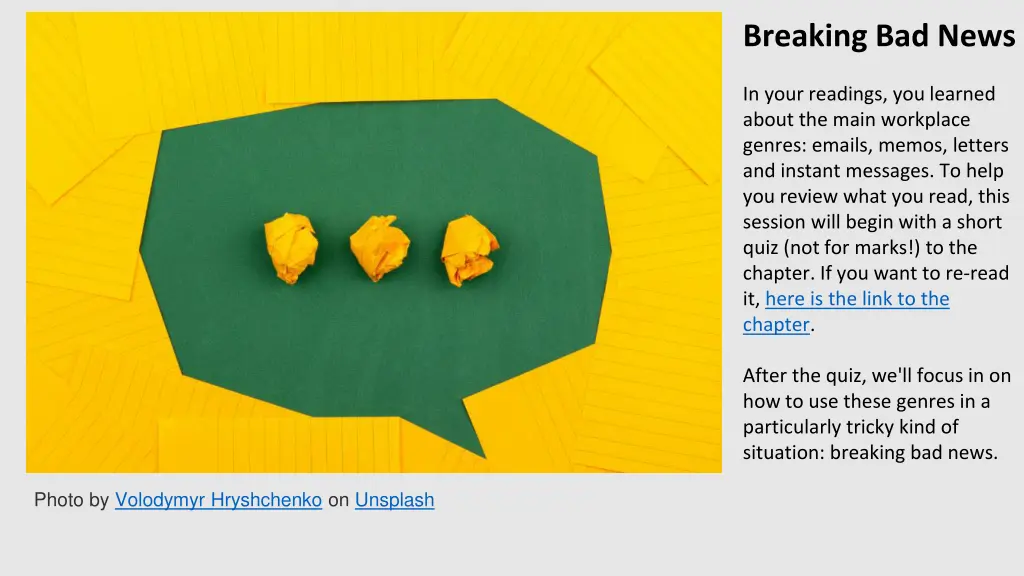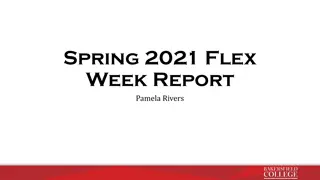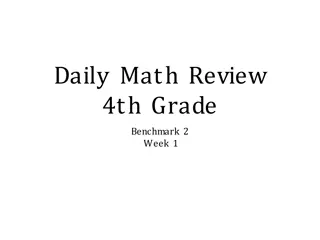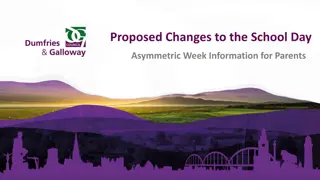
Workplace Genres and Breaking Bad News: Effective Communication Strategies
Learn about workplace genres like emails, memos, and letters. Test your knowledge with a quiz and understand how to effectively deliver bad news in professional settings. Explore techniques to choose the appropriate genre and navigate tricky situations. Enhance your communication skills for success in the workplace.
Download Presentation

Please find below an Image/Link to download the presentation.
The content on the website is provided AS IS for your information and personal use only. It may not be sold, licensed, or shared on other websites without obtaining consent from the author. If you encounter any issues during the download, it is possible that the publisher has removed the file from their server.
You are allowed to download the files provided on this website for personal or commercial use, subject to the condition that they are used lawfully. All files are the property of their respective owners.
The content on the website is provided AS IS for your information and personal use only. It may not be sold, licensed, or shared on other websites without obtaining consent from the author.
E N D
Presentation Transcript
Breaking Bad News In your readings, you learned about the main workplace genres: emails, memos, letters and instant messages. To help you review what you read, this session will begin with a short quiz (not for marks!) to the chapter. If you want to re-read it, here is the link to the chapter. After the quiz, we'll focus in on how to use these genres in a particularly tricky kind of situation: breaking bad news. Photo by Volodymyr Hryshchenko on Unsplash
Mind Map But first, since it's the beginning of a new module, let's take a moment to think about the mind map that you created with your group for Module #2. Hopefully, you were able to find some connections between the first and second module. You can consider: What are the most important ideas that have come up so far? What are your unanswered questions? How do you think you'll use the knowledge you gained in Module #1 and #2 in this module? Did everyone in your group make the same connections? Did anyone disagree? You don't have to have the perfect answers for these questions, but taking a few moments to reflect will help prepare you for success in Module #3.
1. How does the CMAPP model help you choose what genre (email, memo, letter, etc) to send? 2. When choosing a genre, which of the following questions should you ask yourself? a. How quickly does my audience need this information? b. How does my audience expect to receive this information? c. What way is this information normally sent in my organization? d. All of the above. a. CMAPP is only useful in situations with maps. b. Because it helps you with revision. c. By considering your context, message, audience, and purpose, you ll be able to choose a more effective genre.
3. What is an email frame? 4. What is the purpose of a memo? a. The chain of emails that people have responded to. b. When you begin the email by telling the reader what to expect and end it by telling the reader what to do. c. The to and from lines. a. To have a conversation. b. To broadcast information, usually within an organization. c. To get a quick response.
5. Which of the following statements is true about email? 6. Is it okay to send an instant message to your colleagues at 11 p.m. at night? a. Emails are always informal. b. Unless you re sending bad news, you should tell the reader why you re writing early in the email. c. When you work for a company, you own your own emails and have the right to privacy. a. Yes. You should always be able to reach your coworkers. b. No. Unless your company is global and has rules about communicating across time zones, sending instant messages late at night is often considered rude because the notification might wake people up.
Check your answers 1. c 2. d 3. b 4. b 5. b 6. b
Freewrite Breaking bad news looks different in different cultures, and even different families. That's one of the reasons it can be so tough to do. To begin, let's reflect on our experiences with breaking bad news. Set a timer for 5 minutes, then Activity Using either the blog that you're studying or a piece of your own work, see if you can find some of the principles we just discussed, such as: Wordiness Filler phrases Vague language Passive voice Sentence fragments or run-on sentences Jargon write on the following topic: How do people break bad news or deal with conflict in your family or culture?
Reflection Take a look at what you've written. Our conflict resolution skills are deeply ingrained, so it's helpful to take a moment to reflect on: Do I break bad news the same in every situation? What about the approach to bad news/conflict I learned is useful? What about the approach to bad news/conflict I learned is not useful?
So, we've learned that whether you're writing an email, a memo, a letter or a text message, you should focus on helping the reader understand your message quickly. There is, however, one exception: when you're breaking bad news. When you break bad news in the workplace, you have 7 goals: 1. Be clear and concise to minimize the chances of confusion or back-and-forth communication. 2. Help the receiver understand and accept the news. 3. Maintain trust and respect for the business or organization and for the receiver. 4. Avoid legal liability or erroneous admission of guilt or culpability. 5. Maintain the relationship, even if a formal association is being terminated. (Note: this only applies to situations where you want the relationship to continue.) 6. Reduce the anxiety associated with the negative news to increase comprehension. 7. Achieve the designated business outcome.
When you break bad news, you can take the direct or indirect approach. Here, we're going to focus on the indirect approach. You probably recognize this approach if you've ever received a form rejection. The indirect approach for delivering bad news has five main parts: 1. Open with a buffer statement 2. Explain the situation. 3. Break the bad news. 4. Redirect or provide alternatives 5. End politely, looking to the future. Let's take a look at how this looks in action.
The following email has used different emphasis of font to show the parts of the model: 1.Open with a buffer statement 2.Explain the situation. 3.Break the bad news. 4.Redirect or provide alternatives 5.End politely, looking to the future. Thank you for applying to our scholarship fund. This year, we had 150 applicants apply for just one scholarship. The average GPA was 3.74 and we were impressed by the applicants' extracurricular achievements. Though we were impressed by your application, we unfortunately did not select you for the award. We would, however, like to draw your attention to other scholarships that we administer, such as the Young Scholars Achievement Fund. The deadline is July 1st and information can be found on our website. Thank you for applying to our scholarship fund. We wish you the best in your academic journey.
You can see that if we wrote this message using the direct approach, as we've done below, that it wouldn't be as effective. The direct approach puts the most important information first, the explanation or details in the middle, and a call to action at the end. Using the direct approach in this scenario gives the message a harsh and uncaring tone: You were not selected for the award. This year, we had 150 applicants apply for just one scholarship. The average GPA was 3.72 and we were impressed by the applicants' extracurricular achievements. Please check out the other scholarships we administer, such as the Young Scholars Achievement Fund. The deadline is July 1st and information can be found on our website.
As you can see, the indirect approach works well if you have to break bad news to a large number of people. Depending on your relationship with the person, however, you will likely want to adapt this model. Take a look at this scenario and think about how you would react: You run a clothing boutique, and your friend makes specialty candles. Last summer, you offered some of her Summer Breeze collection candles in your store. Unfortunately, you got a lot of complaints about the candles, and many customers returned them, then left bad reviews on your Yelp page. Your friend just told you that she has a new line of candles and wants to offer them in your store. You have to tell her no. What do you do? Photo by Esther Wilhelmsson on Unsplash
Your answer will depend on: Your relationship to your friend. How your friend has reacted to negative news in the past. Your cultural background. Some cultures value saving face, for example. Some are blunt with friends but avoid breaking bad news in business contexts. Your other values. Would you tell a small lie to save your friend's feelings or would you be honest? Your conflict style. Do you avoid conflict or embrace it? What outcome you want. Do you want to make it clear you won't be working with her again, or would you be willing to sell the candles if she made some changes? All of these factors will influence what the "right" answer is. The right answer with one friend might not be the right approach for another. In this situation, however, it is sometimes helpful to reflect on the best case scenario. What's the best you can hope for in this situation? What would be the worst outcome? What is the most likely outcome?
As you can see, breaking bad news requires a lot of reflection. Hopefully this mini lesson will help you break bad news more humanely and kindly throughout your professional life. For more information, read the chapter Breaking Bad News. Photo by Frank Busch on Unsplash






















